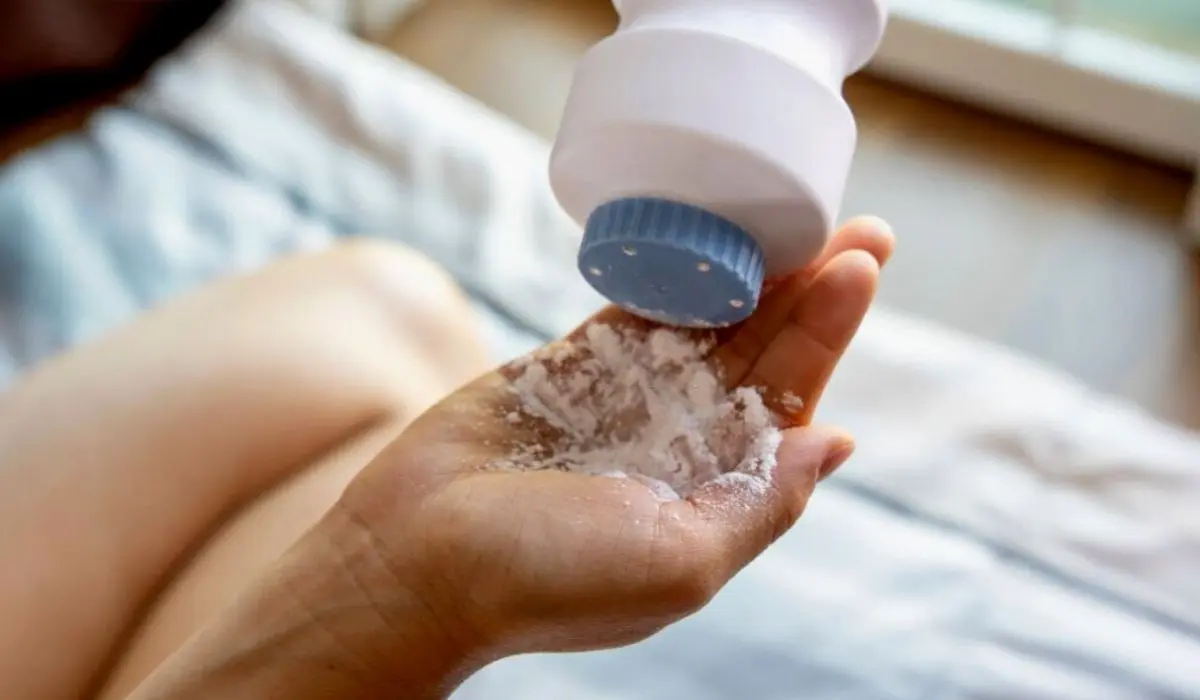Skin rashes are a common irritation that nearly everyone experiences at some point. The itchy, inflamed patches can arise from allergic reactions, infections, skin conditions like eczema, or chafing.
For mild rashes, using talcum powder is often recommended as a soothing home remedy. But is talcum powder truly effective and safe for skin rashes? Understanding how to apply talc and weighing its benefits and risks enables informed usage.
What is Skin Rash? How is it Affected?
A skin rash refers to an area of irritated or inflamed skin that may appear red, bumpy, scaly, swollen, or cracked. Rashes develop when the skin barrier is compromised, allowing irritants, allergens, or bacteria to penetrate and trigger inflammation.
Common culprits include poison ivy, soaps, fabrics, new medications, and viral infections. Babies in diapers frequently get rashes too.
While rashes can occur anywhere, common sites include the face, neck, hands, armpits, groin, and buttocks.
Some rashes are localized while others affect larger skin areas. They range from mildly bothersome to severely painful depending on the cause. Most resolve without treatment, but some require medical intervention.
Symptoms of Skin Rash
Symptoms accompanying a rash may include:
? Red, bumpy, or scaly patches
? Itching, stinging, burning, or pain
? Cracked, oozing, or scabbed skin
? Swelling and inflammation
? Blisters, pimples, or hives
? Peeling or shedding skin
? Sensitization to sun exposure
? Raw, eroded skin from scratching
Is Talcum Powder Good for Skin Rash? Will it be Beneficial for Long-Term Use?
Talcum powder can provide temporary relief from skin rash discomfort due to its ability to:

? Absorb excess moisture that triggers itching and inflammation
? Form a protective barrier over inflamed skin to prevent infection
? Provide a cooling sensation and soothe irritation
? Reduce friction that can further aggravate sensitive rashes
However, talc is not a treatment for the underlying cause of rashes. It also carries some health risks with extended use, including potential asbestos content in some talc formulations and associations between genital talc use and cancers. Using it sparingly just on problem areas is best.
Steps for Applying Talcum Powder for Skin Rash
? Cleanse – Gently wash the rash with a mild soap and pat it fully dry.
? Allow moisture absorption – Let the skin air dry for 5-10 minutes before applying powder.
? Apply lightly – Sprinkle a thin layer of talc over the affected area. Avoid rubbing it in harshly.
? Target creases – Focus on skin folds like groin, underarms, and neck where moisture collects.
? Always patch test first – Apply to a small area to check for any irritation before using on larger patches of rash.
? Repeat – Reapply powder 2-3 times per day or when wet/moist to maintain dryness.
Benefits of Talcum Powder Over Skin Rash
When used appropriately, talc powder:
? Absorbs excess moisture and sweat that can worsen rashes
? Provides a protective cover over inflamed skin
? Creates a friction barrier to minimize rubbing of sensitive skin
? Cools and soothes itchy, inflamed skin
? Dries out weeping rashes
? Prevents secondary infections
? Offers relief from discomfort
Read More:- Does Milk Help In Glowing Skin? Skin Savior Or Myth?
Tips and Precautions While Using Talcum Powder on Affected Skin Area
? Avoid using on broken skin or unidentified rashes. Seek medical diagnosis first.
? Use minimally only on problem areas and avoid inhalation.
? Opt for talc-free versions like corn starch or arrowroot powders to avoid asbestos risks.
? Discontinue if irritation or dryness occurs.
? Avoid applying to facial or genital areas.
? Keep powder away from babies’ faces due to inhalation risks.
? Don’t use medicated powders without medical guidance.
Conclusion
When used judiciously, talcum powder can provide temporary relief from irritation and itchiness associated with some skin rashes. It helps create a favorable healing environment by absorbing moisture and soothing inflamed skin.
However, talc is not a cure for rashes and carries some health risks with extended use.
Alternative drying powders like cornstarch are preferable. Most rashes ultimately require treatment of the underlying trigger and cause for lasting relief.
Read More:- What Are The Causes Of Peeling Skin On The Face? How To Treat It?
FAQs
Q: Does talc powder increase the risk of skin infections?
A: When used excessively it can clog pores. But its protective absorbing properties help prevent secondary infections in open rashes.
Q: Why shouldn’t you put talcum powder on your face?
A: Facial skin is very delicate. Talc particles can get trapped in pores causing acne. Inhalation is also a concern.
Q: Is calamine lotion better than talcum powder for rashes?
A: Calamine works well for highly inflammatory rashes where its anti-itch properties are desired. Talc is better suited for oozing/weeping rashes needing drying action.
Q: Can you use talcum powder on sunburns?
A: No, sunburns need hydration and healing balms. Talc would dry out and further aggravate burned skin.
Q: Is cornstarch powder safer than talcum for the skin?
A: Yes, cornstarch powder provides similar drying action without the health concerns of asbestos contamination seen with some talc sources.

